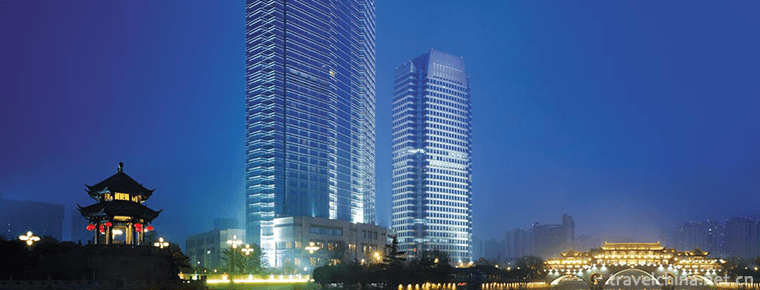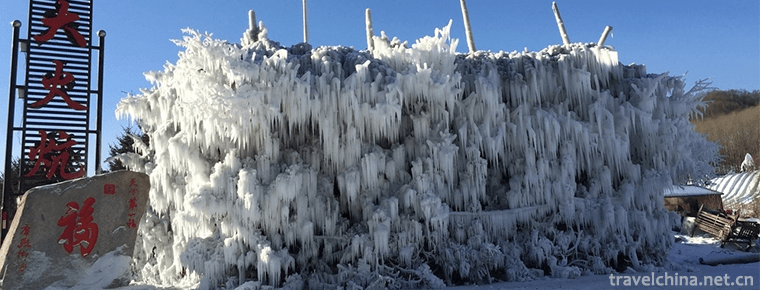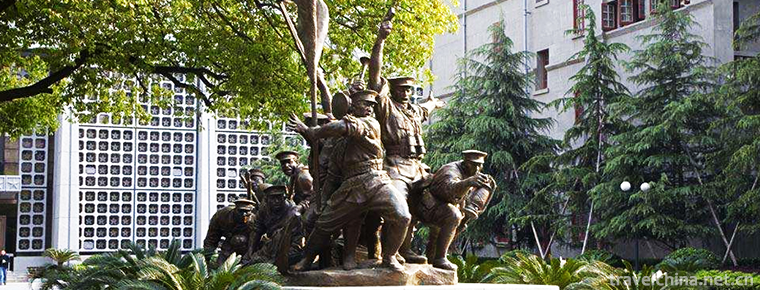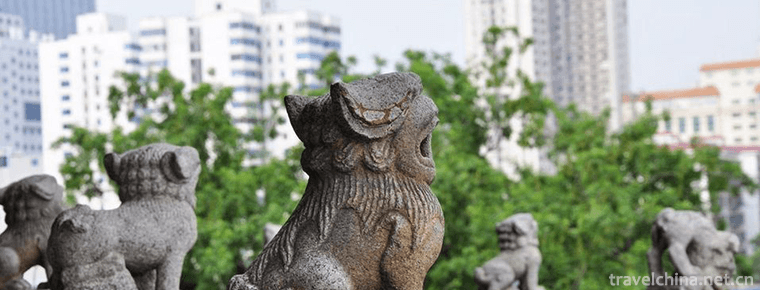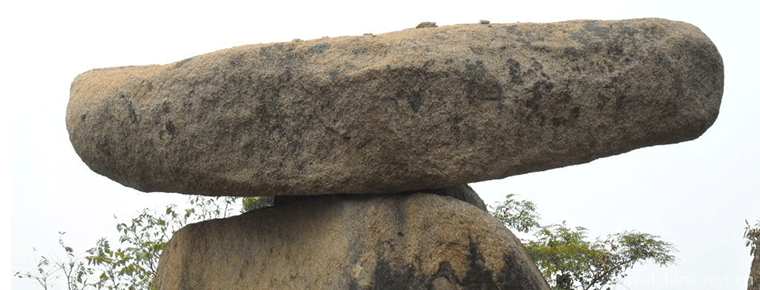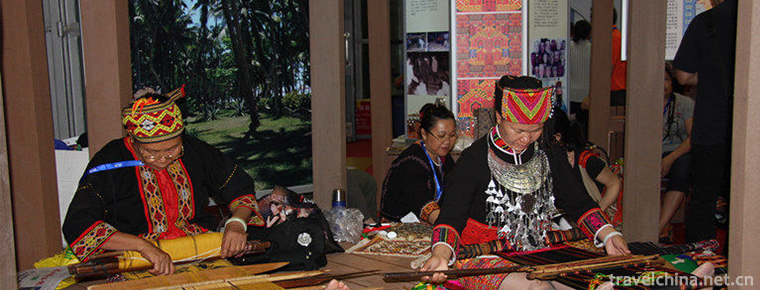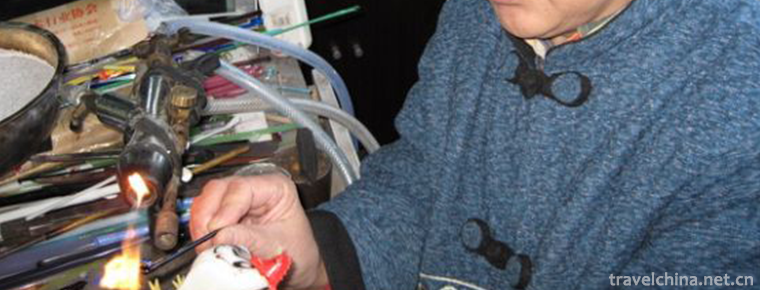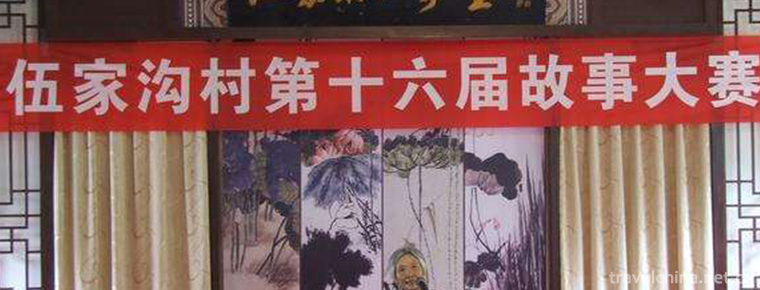Shigu Academy
Shigu Academy
Shigu Academy, located in Shigu Mountain, Shigu District, Hengyang City, an important city in central and southern Hunan Province, is the birthplace of Huxiang culture and the first resort in Hunan Province. It was founded in the Tang and Yuan Dynasties (810 A.D.) and has a history of more than 1200 years.
Li Kuanbu, a magistrate in Tang Dynasty, came to Nanyue to see Shigu Mountain surrounded by lush forests, Xiangjiang River, Steamed Water and Leishui River. He finished reading on it and founded the earliest Academy in ancient China. It was the beginning of the so-called Shigu Academy.
Zhao Guangyi, Emperor Taizong of Song Dynasty, named Shigu Academy.
In the three years from Song to Dao (A.D. 1997), Li Shizhen, a Hengzhou native, expanded his academy as a lecture place for Hengzhou scholars.
In the second year of Song Jinghu (1035 A.D.), the court awarded the "Shigu Academy", which is also called the Four Academies in China, together with Yingtian Academy, Bailudong Academy and Yuelu Academy.
The main buildings of Shigu Academy are Wuhou Temple, Li Zhongjie Temple, Grand View Building, Qixian Temple, Jingyetang Hall and Hejiang Pavilion.
In July 1944, Shigu Academy was destroyed by Japanese artillery during the Hengyang Defense War. In 2006, the people's government of Hengyang City restored the Qing Dynasty pattern and rebuilt the Shigu Academy.
Introduction to Academies
Founded in the Tang Dynasty, Hengzhou Shigushan (Shigushan, Shigu District, Hengyang City), hence its name. At the beginning of Tang Dynasty, Shi Qiying was stabbed, and Jiangting was built on the left side of the mountain. During the reign of Xian Zongyuan, Li Kuan, a Hengzhou native, built a roof and read among them. In 1978, Zhao Guangyi, Emperor Taizong of the Song Dynasty, awarded the plaque of "Shigu Academy" to Taizong of the Song Dynasty and three years from Taizong to Dao of the Song Dynasty (1997). Li Shizhen, a Hengzhou native, asked the county to establish a formal academy here to enroll students and give lectures. Song Renzong Jingyou 2 years (1035). Liu Yuan, who once served as the administrator of Jixian Temple, reported the story of Shigu Academy to the emperor when he was in Hengzhou, and was listed as the first of the four academies in the world at the beginning of Song Xing by the General Examination of Documents. Renzong was once abandoned. By the time of Xiaozong in the Southern Song Dynasty, because of the expansion of the old courtyard, the scale was increasing, and it had not been abandoned until the end of Ning Dynasty. Zhu Xi wrote about it.
The earliest Academy in China
Shigu Academy is the earliest academy founded by the four major academies in China, and it has precise historical records. Academy system is a unique educational organization in China. It has not existed for more than 1,000 years from Tang to Qing Dynasty. In Tang Dynasty, 11 academies have been textually studied and 17 of them have been recorded in local historical records (based on Chen Yuanhui's Academy System in Ancient China, Wang Jingdi's Academy Pass and Zhou Shufu's Research on Academy System). There are only three of them: Li Kuan Zhongxiu Academy in Hengyang (Shigu Academy), Nanxi Academy in Nanxi and Feijun Academy in Yongji.
Eleven academies of Quan Tang Poetry:
Li Bi College (Nanyue Hengshan Youhou College), Fourth Lang Xinxiu Shu, Zhao's Kunji College, Du Zhongcheng College, Fei Jun College, Li Kuanzhong Xiucai College, Nanxi College, Li Qunyu College, Tian General College, Zinephew College, Shen Bin Jinshi College
Local chronicles indicate that seventeen academies were set up for the Tang Dynasty:
Lizheng Academy, Zhang Jiuzong Academy, Shigu Academy, Huangliao Academy, Songzhou Academy, Qingshan Academy, Yingzhou Academy, Jingxing Academy, Yimen Academy, Aofeng Academy, Weizeu Academy (Nanyue Hengshan), Lupan Academy (Nanyue Hengshan), Duling Academy (Yiyang), Mingdao Academy, Wutong Academy, Guiyan Academy.
From the above historical facts, it is confirmed that Shigu Academy is the only one of the four major academies in China that became famous in the Tang Dynasty. In the Tang Dynasty, famous scholars such as Qi Ying, Yu Wenxuan, Lv Wen, Han Changli and Zou Jun left poems in Shigu. Songshan Academy was founded in the 5th Zhou Dynasty according to the local chronicle Kaifeng County Chronicle, which was more than 200 years later than Shigu Academy.
geographical environment
Shigu Academy is located in Shigushan, Shigu District, Hengyang City, Zhongnan Town. It is situated at the intersection of Xiangjiang River, Steaming Water and Leishui River in Hengyang City. It is 69 meters above sea level. It is one of the four academies in China. It was founded in Tang and Yuan Dynasties and five years (810 A.D.) and has a history of more than 1200 years. The birthplace of Huxiang culture and the first resort of Hunan Province are cultural tourism resorts which integrate lecturing and learning, searching for stones and visiting leisure.
Shigu Academy is adjacent to Qingcao Bridge, an ancient stone bridge in Hengyang. Hengyang eight scenery "Zhuling Cave Poetry Thousands" and "Qingcao Bridge Wine Hundred" are also here. For thousands of years, literati and poets have flocked to Hengyang, where they have been drinking, chanting poems and Fu with endless charm . Hengyang's Wuhua Tianbao and humanities are gathered together, and the culture of stone drums has lasted for thousands of years.
building structure
Shigu Academy covers an area of 4000 square meters. It is surrounded by water on three sides and empty on four sides. It has unique geographical location, beautiful scenery, shady trees, pavilions and pavilions, cornices and cornices, rippling sails on the river, late singing and fishing. It has been known as "Shigu Jiangshan Xiuhua" since ancient times. There are stone drums about two meters high in the academy. In the book of Guanshi Gushu written at the beginning of Geng Zhongchu in Jin Dynasty, "Mingshi has a latent sound and thunder shocks nine days." In the Northern Wei Dynasty, Yun Daoyuan's Annotation of Shui Jing contains: "Stone drums are six feet tall, whereas Xiangshui's drums are about military revolution." Stone Drum Mountain is steep and upright, with strange scenery. It has always been known as the first scenic spot in Hunan.
Achieve honor
Shigu Academy is a millennium academy which has experienced seven dynasties: Tang, Song, Yuan, Ming, Qing, Republic of China and Republic. It has been extensively renovated. Su Shi, Zhou Dunyi, Zhu Xi, Zhang Hu, Cheng Xue, Zheng Xiang, Zhan Ruoshui, Yezhao Zhao, Zou Shouyi, Mao Kun, Kuang Minben, Zhao Dazhou, Lin Xueyi, Wang Jingsuo, Cai Runan, Hu Dongshan, Li Tongye, Luo Jinyin, Wang Jiyun, Zeng Xiyun, etc. In Hengyang, Wang Juren, Xia Rubi, Guan Siqiu, Zou Tonglu, Zhu Bingru, Wu Dingxiang, Zeng Dynasty Festival, Chen Zongqi, Wang Fuzhi, Zeng Guofan, Peng Yulin, Peng Shu, Yang Du, Qi Baishi and a large number of celebrities who had a significant impact on Chinese history were cultivated. Luo Han, Yun Daoyuan, Qi Ying, Yu Wenxuan, Du Fu, Lv Wen, Han Yu, Liu Zongyuan, Liu Yuxi, Fan Chengda , Xin Qiji, Wen Tianxiang, Xu Xiake , and so on, or lecturing apprentices, or writing poems, or inscribing walls, or seeking spectacular attractions, their form is magnificent.
Shigu Academy was built in Shigushan, Hengzhou, Tang Dynasty. It is the earliest Academy with precise historical records among the four academies in China. As the first of the "four academies" in the Song Dynasty and the birthplace of Huxiang culture, Shigu Academy has enjoyed a relatively high position in the history of Chinese academy, education and culture for thousands of years. The so-called "steaming stone from Hunan to attack wrong jade, drumming Hengyue earthquake in the south of the sky" . Unfortunately, in July 1944, the Shigu Academy was destroyed by Japanese artillery fire during the Hengyang Defence War. In June 2006, the People's Government of Hengyang City renovated the Shigu Academy.







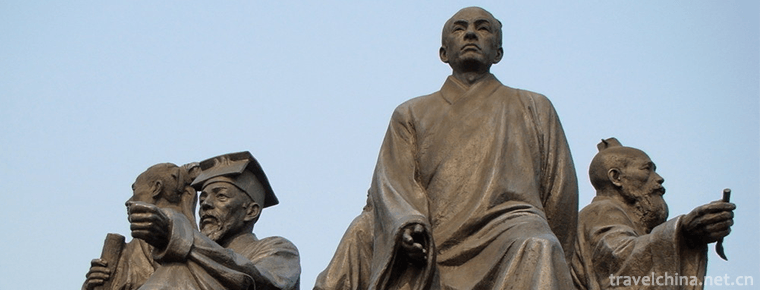
-
Chengdu Shangri La Hotel
Chengdu Shangri-La Hotel belongs to Shangri-La Hotel Group. It was officially completed and put into use on May 20, 2007. The hotel is located at No. 9 Binjiang East Road, Chengdu City.
Views: 158 Time 2018-12-16 -
Yabuli Ski Resort
Yabuli Skiing Resort is a national AAAA-level scenic spot, located 20 kilometers southeast of Yabuli Town, Shangzhi City, Harbin City, Heilongjiang Province, 240 kilometers away from Harbin City.
Views: 184 Time 2018-12-22 -
Bayi Memorial Hall in Nanchang
The Bayiyi Memorial Hall in Nanchang was established in 1956 and officially opened to the outside world on October 1, 1959. In 1961, it was announced by the State Council as the first batch of key nat.
Views: 155 Time 2018-12-31 -
Tianxin Pavilion
Tianxin Pavilion is located in the southeast corner of Changsha City, Hunan Province. It is a tower on the ancient city wall of Changsha where Chengnan Road meets Tianxin Road..
Views: 118 Time 2019-02-22 -
mount yi
Yashan, also known as "Zou Yashan", "Zou Shan", "Dong Shan", is one of the nine famous historical and cultural mountains in ancient China at an altitude of 582.8 meters. .
Views: 128 Time 2019-03-04 -
Traditional Textile Dyeing Weaving and Embroidery Techniques of the Li Nationality
The traditional spinning, dyeing, weaving and embroidery techniques of the Li nationality, the traditional handicraft techniques of Hainan Province, are one of the national intangible cultural heritag.
Views: 92 Time 2019-05-12 -
Material liao qi
Material wares are traditional handicraft products in Beijing. It is a traditional handicraft made of glass strips. There was no direct glass-making industry in Beijing. The materials used were collec.
Views: 118 Time 2019-05-13 -
Wujiagou Folk Stories
Wujiagou folktales originated in Wujiagou Village, Liuliping Town, west of Danjiangkou City, Hubei Province. They are a wonderful flower in the garden of Chinese traditional folk literature. They advo.
Views: 183 Time 2019-06-29 -
New brown leaf weaving
Xinfang Brown edition is one of the traditional handicraft products in China. It has entered the third batch of national intangible cultural heritage list recommendation project list. It originated in.
Views: 473 Time 2019-08-16 -
Beijing University of Posts and Telecommunications
More than sixty years of wind and rain, more than sixty years of spring and autumn fruits. In the north of Mingguang and the south of Jimen, the ancient city walls witness the ever-lasting radio waves.
Views: 116 Time 2019-09-22 -
Fobao scenic spot
Fobao scenic spot, located 128 kilometers southeast of Sichuan Province, is located in the southern edge of Sichuan Basin. It is a primeval forest area at the tail of the North vein of Dalou mountain. It covers an area of 380 square kilometers. It has the characteristics of mountain, water, stone and forest. It is a subtropical humid climate with superior natural conditions and well preserved vegetation..
Views: 172 Time 2020-10-16 -
Guangyuan transportation
Guangyuan has been the transportation hub and material distribution center in the adjacent areas of Sichuan, Shaanxi and Gansu since ancient times. The reconstructed Guangyuan new railway station includes Baoji Chengdu double track railway and .
Views: 80 Time 2020-12-15
